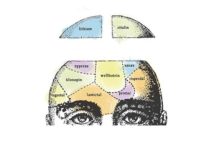Dr. Leanne Bogen-Johnsten and a team of researchers published the results of their new qualitative study on what enables voice hearers to share their experiences with others and what serves as a barrier to disclosure. The perspectives of the voice-hearers featured in the research underscore that stigma and negative perceptions of voice hearing present significant obstacles within early intervention programs.
“It is important that EIP [Early Intervention in Psychosis] practitioners recognize and are able to discuss service users’ voice hearing experiences.” Bogen-Johnsten writes. “Conventional approaches have typically discouraged enquiry into the experience of voice hearing, preferring to focus the hearer toward a more objective reality. Enhancing therapeutic skills may build confidence and help practitioners to engage with clients distressed by voices.”

Bogen-Johnston and researchers argue that early detection of voice hearing symptoms is crucial to buffering against future development of distressing psychosis-related symptoms. This study was part of a larger project involving data collection over a longer period. The data were analyzed using both quantitative and qualitative methods.
The recent results were gathered from conducting qualitative interviews with voice hearers. Twenty service-users of Early Intervention in Psychosis (EIP) services in England participated (12 men, eight women). Participant ages ranged from 19 to 35 years old (M = 25), and all participants were classified as experiencing their first-episode of psychosis.
The purpose of the study was to gather perspectives from service-users on their journey with voice hearing including how they have managed it, how it developed over time, and their experiences in therapy. The research question specifically involved investigating what the barriers and enablers are to the disclosure of distressing voices to family, friends, and health professionals. Qualitative analysis was done according to thematic analysis. This involves researchers identifying important themes and patterns across interviews.
Three overarching themes were identified by the researchers: (1) effects of disclosure on the self, (2) effect of disclosure on others, and (3) help-seeking.
The first theme, effects of disclosure on the self, outlined the stages of voice hearing and how it affected the individual.
“Even when voices were acknowledged, if the experience did not significantly affect everyday life, then disclosure was not considered essential. Hearing voices intermittently was not recognized as a problem that required professional help. Voices were accepted as something that occasionally interfered with life and needed no further enquiry.”
In this way, the researchers contend that the first step to disclosure often involved voice hearers identifying their experience as a problem. After this point, voice hearers reported experiences of shame around their experiences, leading them to conceal it from others for fear of embarrassment. However, it was identified that voice hearers eventually felt desperate as their experiences escalated and grew increasingly difficult to tolerate and hide. At this stage, some participants described experiences of monotony and suicidality.
The second theme, effects of disclosure on others, featured participant accounts emphasizing that it was common to think about the impact voice-hearer’s disclosure would have on others, taking into account others’ needs and potential reactions. The researchers especially highlight the ways in which cultural or family narratives about voice hearing and “mental illness” could either encourage or inhibit disclosure. One participant shares why they refrained from telling family members of their experience:
“I just thought like, well my dad, my sister’s suffered with mental illness … I knew that I didn’t want to put any more pressure on my dad … I think I felt a bit scared. I thought of my dad going through all that with my sister I didn’t want to put any more pressure on him. So again it was that thing of not worrying anyone else, sort of deal with it on my own.”
Voice hearers were especially and understandably reluctant to report experiences when anticipating negative responses and judgment from the recipients, the researchers report.
As presented in the third theme, help-seeking, participants reported feeling alone, despite wanting someone to turn to and share their experiences with. This was caused by lack of social support and cultural norms or gendered stereotypes related to the acceptability of help-seeking and expressing vulnerability. One participant explained:
“I was a bit confused. Confused and frightened. I didn’t know who to turn to.”
The researchers proceed to interpret and discuss findings related to mental health stigma and social barriers that manifest as complex personal and interpersonal hindrances to accepting and disclosing voice hearing experiences. They conclude:
“The processes of deciding to disclose voice hearing experiences and seek help are complex, with hearers considering the effect of disclosure upon themselves and significant others. In seeking to reduce the time between onset and treatment for distressing voices, interventions should seek to raise awareness and skill among people most likely to be the recipients of disclosure.”
****
Bogen-Johnston, L., de Visser, R., Strauss, C., Berry, K., & Hayward, M. (2017). “That little doorway where I could suddenly start shouting out”: Barriers and enablers to the disclosure of distressing voices. Journal of health psychology, 1359105317745965. (Link)















I found that the antipsychotics create distressing “voices,” via anticholinergic toxidrome poisoning.
https://en.wikipedia.org/wiki/Toxidrome
And rather than wean a person off the “psychosis” creating “antipsychotics,” the “mental health professionals” believe the person suffering from anticholinergic toxidrome poisoning (always misdiagnosed, since this known antipsychotic poisoning method is not listed in the DSM billing code “bible”) needs more antipsychotics, which of course doesn’t help.
As to, “’It is important that EIP [Early Intervention in Psychosis] practitioners recognize and are able to discuss service users’ voice hearing experiences.’ Bogen-Johnsten writes. ‘Conventional approaches have typically discouraged enquiry into the experience of voice hearing, preferring to focus the hearer toward a more objective reality.'”
I do agree, the conventional approach is to both completely disregard and dismiss the validity of the “voices,” and the person who was misdiagnosed and poisoned. However, in my case the “voices” were bragging about raping my child, and I was eventually handed over the medical evidence of the abuse of my child. My child’s school even decided to close it’s doors forever, just after learning that I’d been handed over that medical evidence of child abuse – hardly the behavior of an innocent school that had a pedophile on its school board.
So “voices” do sometimes, at least, relate to “objective reality.” Thus, discouraging “enquiry into the experience of voice hearing” is unwise. Unless, of course, the “mental health professionals’ goal is to profiteer off of covering up child abuse. Which does appear to be the number one actual function of today’s “mental health professionals,” according to your own medical literature.
Today, “the prevalence of childhood trauma exposure within borderline personality disorder patients has been evidenced to be as high as 92% (Yen et al., 2002). Within individuals diagnosed with psychotic or affective disorders, it reaches 82% (Larsson et al., 2012).”
And the problem with a society having a multibillion dollar, primarily child abuse covering up “mental health system,” is that these child abuse covering up “mental health practitioners” are also aiding, abetting, and empowering the pedophiles. Which, of course, eventually results in all of Western civilization being controlled by pedophiles.
https://www.usatoday24x7.com/putin-the-west-is-controlled-by-satanic-pedophiles/
I’m quite certain our society would be a much better place for the majority if we went back to arresting the pedophiles, and the “mental health professionals” got out of the business of turning child abuse victims, and their legitimately concerned parents, into the “mentally ill” with the psychiatric drugs on a massive scale.
Report comment
Early intervention is medicalization, that is, there is no “mental disorder” until the doctor says so (i.e. makes his diagnosis). If you refrain from intervening technically, and quite literally, you are preventing “mental disorder”. Okay, the fewer people with “mental disorders” you have, the more “mentally healthy” (untreated) people you have.
I’m not Catholic. Doctors may be “soul healers”, and “confession may be good for the soul”, but it can be hard on the life. I’m not a big one for the “confessional mode”. Why? There may be good reasons for embarrassment given ‘admission’ of this or that. If health clinics aren’t adept at using them against people, courts of law sure are.
Help-seeking is not always helpful as “help” is not always help. I’d say there is often much cause for wariness when it comes to airing the family laundry, and the admission of personal difficulties. Something to keep in mind when one is seeking a “healer”/”confessor” to open up about one’s feelings with. Perhaps time can be a better “therapist”. It should go without saying that a too trusting disposition can get you royally screwed. Ideally anyway, realistically it often requires repeating.
Report comment
From the article “I didn’t know who to turn to.”
What religion to turn to? The “Hare Krishna movement” or the religion of magical chemicals ( chem. lobotomies)?
Report comment
The Hare Krishnas would be much healthier. They have a vegetarian diet.
Report comment
Right on.
Report comment
I consulted a psychiatrist when I first began to struggle with “psychosis,” and in the course of our conversation asked him “How do you know when somebody is crazy?” To my surprise, he said “By their behavior.” I questioned him on this, thinking surely there must be some kind of test or symptoms besides just how somebody acts. He insisted (as if there was a difference) that he knew “by their behavior.”
I left the psychiatrist’s office understanding that it was up to me whether I was “crazy” or not. If I lost control of my emotions and began to “act” crazy, then I would be “psychotic.” On the other hand, if I stayed in control of myself in spite of the strange thoughts erupting in my brain, then I would be “sane.” So Joseph Campbell was right after all: the mystic and the madman enter the same waters; the mystic, having been taught by a master, swims, but the poor ignorant madman drowns.
Believe it or not, this insight saved me. I found Carl Jung’s books and followed his advice to write about my experience in a journal instead of acting it out. This kept me out of the psychiatrist’s office and, to coin a phrase, I lived happily ever after. (I’m now 85 years old.)
Report comment
People need to learn to protect themselves. Giving the middle-finger to any and all mental health or recovery program people is only but a first step.
Report comment